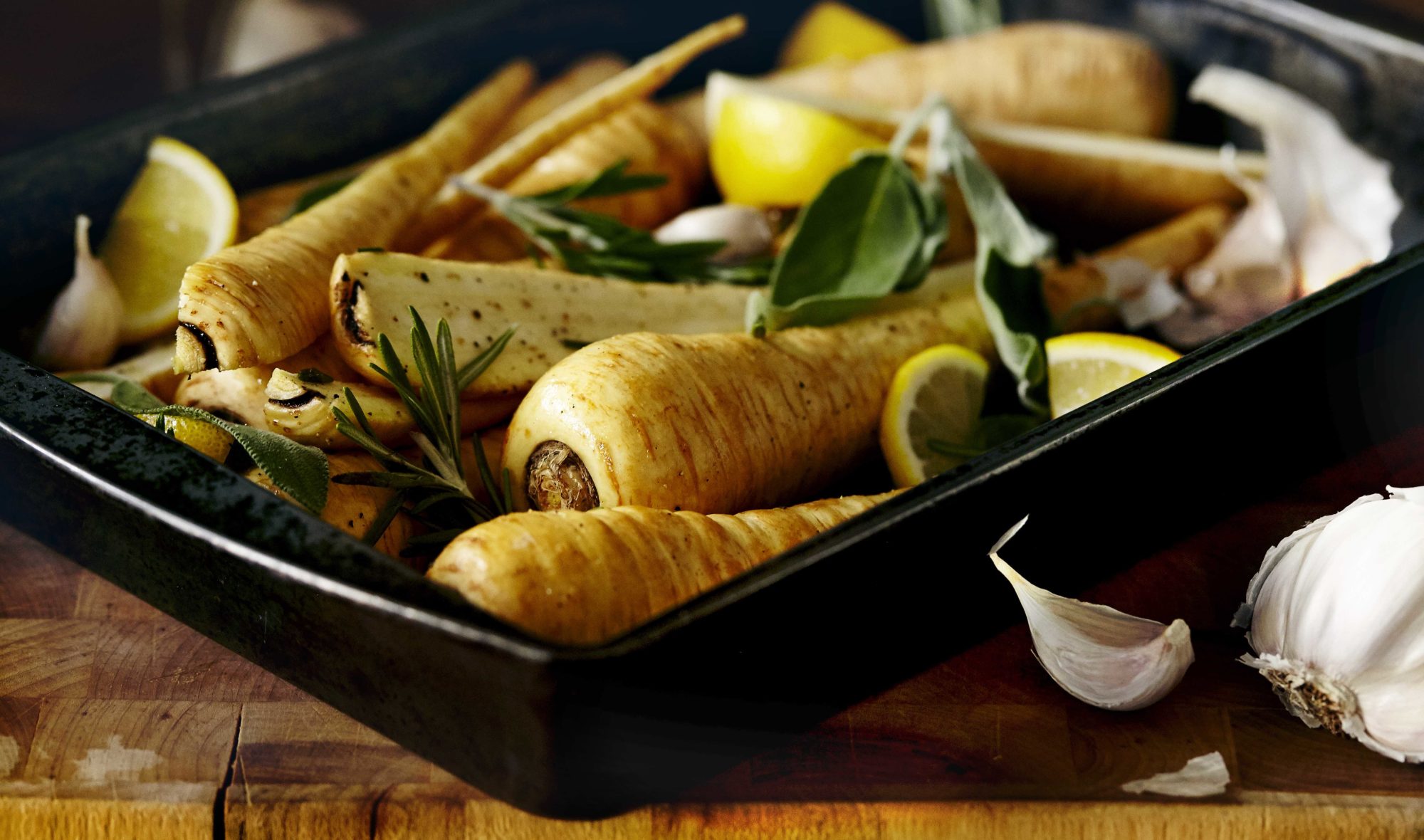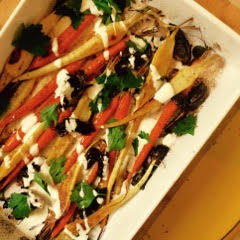
NEW! Lowest Monthly Payment Plan Ever—Master Health Coaching Certification. This week only.

NEW! Lowest Monthly Payment Plan Ever—Level 2 Master Health Coaching Certification.

Parsnips belong to the same family as the carrot and parsley plant. Parsnips look like carrots, with green, leafy tops and a long fleshy root. Parsnips are an excellent source of potassium. You can eat parsnips raw or cooked.
A parsnip is a vegetable that belongs to the same family as the carrot and parsley plant. Its long, tuberous, cream-colored root becomes sweeter tasting if left in the ground until the frost. Parsnips can be stored for months in a cool place, but they are at their best in the late autumn and early winter. They can be eaten cooked or raw.
Parsnips look a lot like carrots, with green, leafy tops and a long, or sometimes bulbous, fleshy root. The root is the edible part of the plant.
An average sized parsnip provides about 75 calories, 1.2g of protein, about 5.0g of fiber, 5.0g of sugar, and 18.0g of carbohydrates.
Parsnips are an excellent source of vitamins and minerals. In particular, they’re a great source of potassium, offering 375 mg per 100g. They’re also rich in antioxidants and are noted for their anti-cancer, anti-inflammatory, and anti-fungal properties.
In buying parsnips, look for smooth, firm, medium-sized roots. Avoid overly large, woody-looking, or soft and shrivelled parsnips. They won’t taste as flavorful. And stay away from those that are too long, straggly, and skinny, because they’re difficult to peel and prepare.
If you grow parsnips, handle their shoots and leaves with care. The sap contains a photosensitive chemical that can be toxic to sensitive people, causing a rash and itchy skin.
Store parsnips in a cool place, either in the crisper of your refrigerator or in a cold cellar. Do not freeze uncooked parsnips. Parsnips are rarely sold with their tops on, but if you happen to buy some at the market with tops, remove those before storing.
To eat parsnips raw, simply wash, peel, and cut them up. They are sweet and delicious and make a great salad paired with sliced apples, walnuts, and a sharp-tasting green such as arugula.
Parsnips can also be boiled, steamed, sautéed, roasted, or fried.
Option 1. Roasting
Wash and peel parsnips and cut into “sticks” about 1 ½” thick. Toss the parsnips with a tablespoon or two of olive oil, a bit of salt, and some pepper, and a sprig of thyme or a few cloves of garlic, if desired. Place on a greased baking sheet or into a Pyrex casserole and roast at 450°F for about 20 minutes or until soft and slightly caramelized at the edges.
Note: You can also roast carrots or potatoes along with your parsnips. Parsnips will cook a little bit faster than the other root vegetables.
Option 2. Boiling
Wash and peel parsnips and cut into pieces. Bring a pot of water to boil, add salt, and place parsnips in the water. Allow to boil lightly until the parsnips feel soft to a cake tester. Drain and season to eat immediately, or use in further preparations such as purées.

This is a perfect autumn side dish for your favourite protein, like grilled steak or roasted chicken. Use up any leftovers in a frittata or salad.
Prep Time: 10 minutes Cook Time: 25 minutes Yield: 4-6 side servings
Preheat oven to 350°F. Begin by cutting the parsnips into quarters lengthwise, so that they are roughly the same size as the carrots.
Note: 1 pound of parsnips and carrots is equivalent to approximately 1 large bunch of each.
Toss the parsnips and carrots into a large bowl and add the dates, oregano, salt, and olive oil.
Toss well and transfer to a 8″ x 11″ baking dish. Bake until veggies are fork tender, about 25 minutes.
Garnish with the parsley leaves and drizzle the yogurt on top if desired.
Store leftovers in fridge.
Enjoy!
Precision Nutrition’s Encyclopedia of Food expands every single month as we highlight new foods and showcase beautiful food photography. If you’d like to stay up to date, simply click this link. From there, we’ll send you a FREE copy of our recipe book. We’ll also let you know when new and delicious foods are added to the site.
Parsnips belong to the same family as the carrot and parsley plant. Parsnips look like carrots, with green, leafy tops and a long fleshy root. Parsnips are an excellent source of potassium. You can eat parsnips raw or cooked.